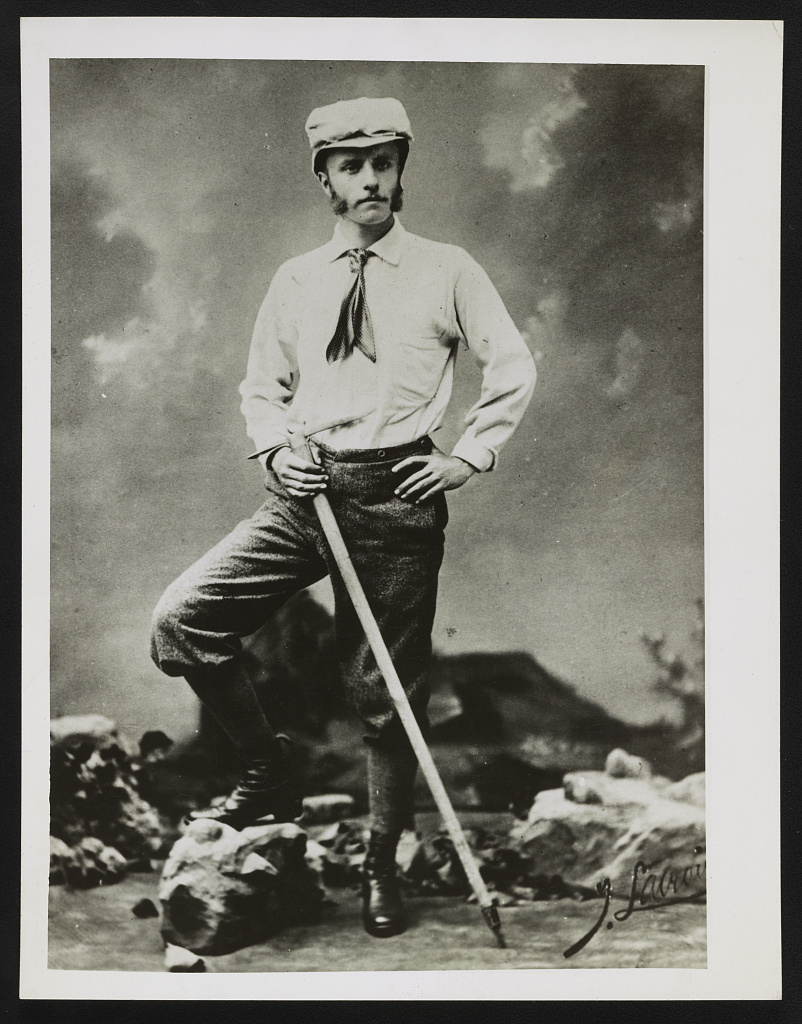
Theodore Roosevelt mountain climbing in the West, 1880
Era:
Year Created: 2017
Historical Theme:
Collection this Document is Affiliated with:
Description: This description from the National Park Service describes Theodore Roosevelt's conservation legacy and efforts as the 26th President of the United States. He is known as the "conservationist president" and successfully preserved millions of acres of public lands.
Categories of Documents:
“We have fallen heirs to the most glorious heritage a people ever received, and each one must do his part if we wish to show that the nation is worthy of its good fortune.” —Theodore Roosevelt
Theodore Roosevelt first came to the badlands in September 1883. The prospect of big game hunting had initially brought him to the West, but, by the time he arrived, the last large herds of bison were gone, having been decimated by hide hunters and disease. As time passed and he was able to spend more time in the area, he became increasingly alarmed by the damage that was being done to the land and its wildlife. He witnessed the virtual destruction of some big game species. Overgrazing severely impacted the grasslands which also affected the habitats of small mammals and songbirds. Conservation increasingly became one of Roosevelt’s main concerns. After he became President in 1901, Roosevelt used his authority to protect wildlife and public lands by creating the U.S. Forest Service and establishing 51 Federal Bird Reservations, 4 National Game Preserves, 150 National Forests, 5 National Parks, and enabling the 1906 American Antiquities Act which he used to proclaim 18 National Monuments. During his presidency, Theodore Roosevelt protected approximately 230,000,000 acres of public land.
Theodore Roosevelt was the nation’s 26th President and is considered by many to have been our country’s “Conservationist President.” Here in the North Dakota badlands, where many of his personal concerns first gave rise to his later environmental efforts, Roosevelt is remembered with a national park that bears his name and honors the memory of this great conservationist.
Roosevelt is also represented on Mt. Rushmore (SD). Two of his homes are part of the National Park Service: Theodore Roosevelt Birthplace National Historic Site (NY) and Sagamore Hill National Historic Site (NY), as is the site where he was sworn in as president (Theodore Roosevelt Inaugural National Historic Site in Buffalo, NY) and a park in Washington D.C., Theodore Roosevelt Island.
“There can be nothing in the world more beautiful than the Yosemite, the groves of the giant sequoias and redwoods, the Canyon of the Colorado, the Canyon of the Yellowstone, the Three Tetons; and our people should see to it that they are preserved for their children and their children’s children forever, with their majestic beauty all marred.” —Theodore Roosevelt
“We have become great because of the lavish use of our resources. But the time has come to inquire seriously what will happen when our forests are gone, when the coal, the iron, the oil, and the gas are exhausted, when the soils have still further impoverished and washed into the streams, polluting the rivers, denuding the fields and obstructing navigation.” —Theodore Roosevelt
“It is also vandalism wantonly to destroy or to permit the destruction of what is beautiful in nature, whether it be a cliff, a forest, or a species of mammal or bird. Here in the United States we turn our rivers and streams into sewers and dumping-grounds, we pollute the air, we destroy forests, and exterminate fishes, birds and mammals -- not to speak of vulgarizing charming landscapes with hideous advertisements. But at last it looks as if our people were awakening.” —Theodore Roosevelt
TR, after camping in Yosemite National Park:
“It was like lying in a great solemn cathedral, far vaster and more beautiful than any built by the hand of man.”
“In the Grand Canyon, Arizona has a natural wonder which is in kind absolutely unparalleled throughout the rest of the world. I want to ask you to keep this great wonder of nature as it now is. I hope you will not have a building of any kind, not a summer cottage, a hotel or anything else, to mar the wonderful grandeur, the sublimity, the great loneliness and beauty of the canyon. Leave it as it is. You cannot improve on it. The ages have been at work on it, and man can only mar it." —Theodore Roosevelt
Citation: “Theodore Roosevelt and Conservation.” National Parks Service, U.S. Department of the Interior, home.nps.gov/thro/learn/historyculture/theodore-roosevelt-and-conservation.htm. Accessed 28 Apr. 2025.

